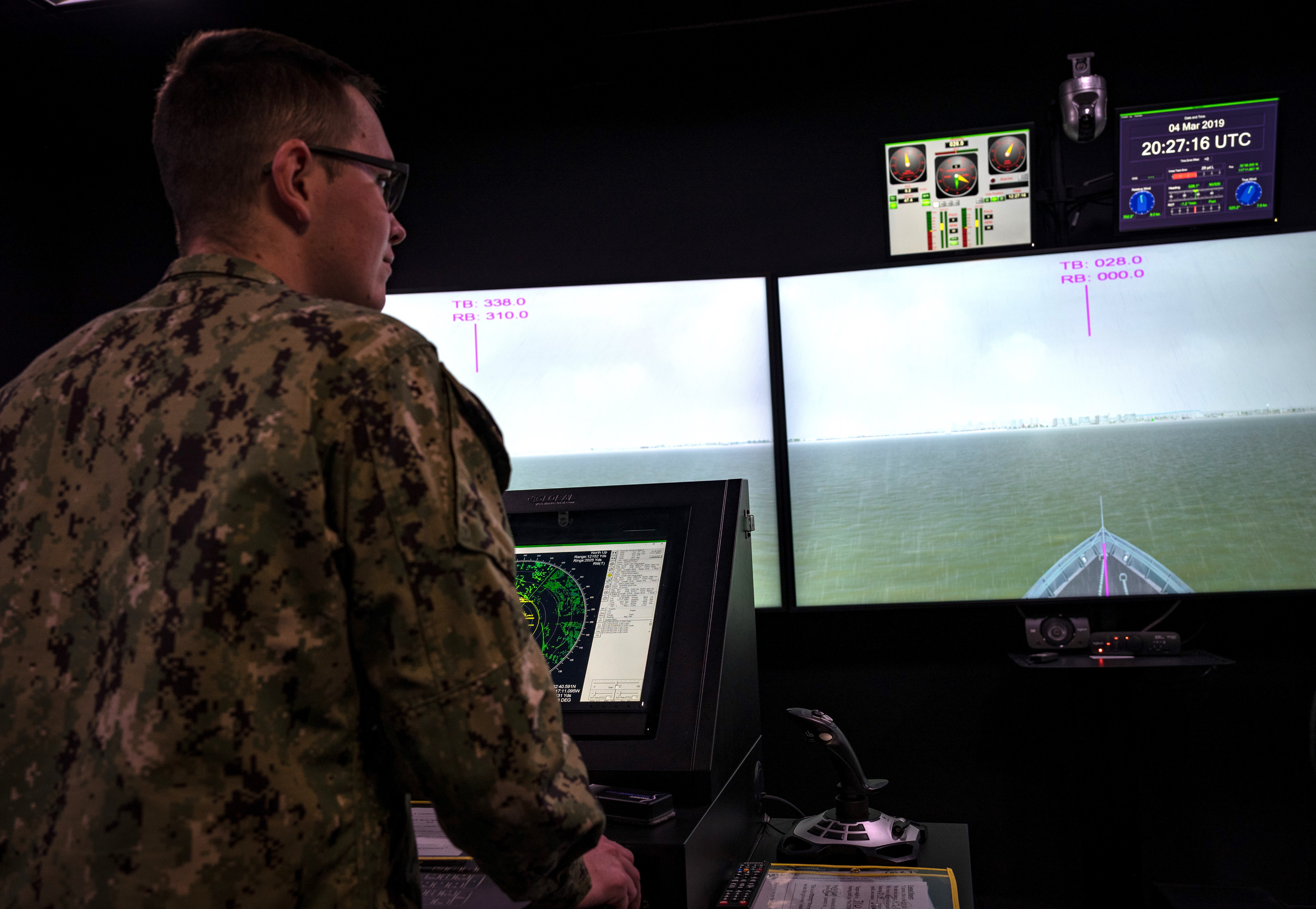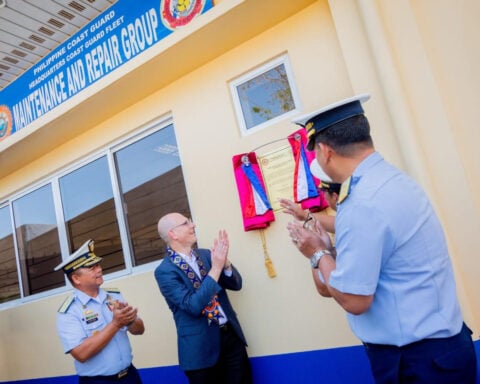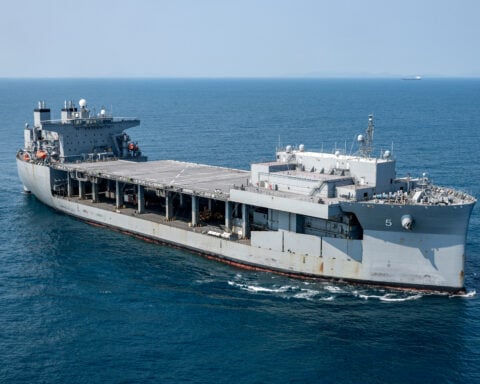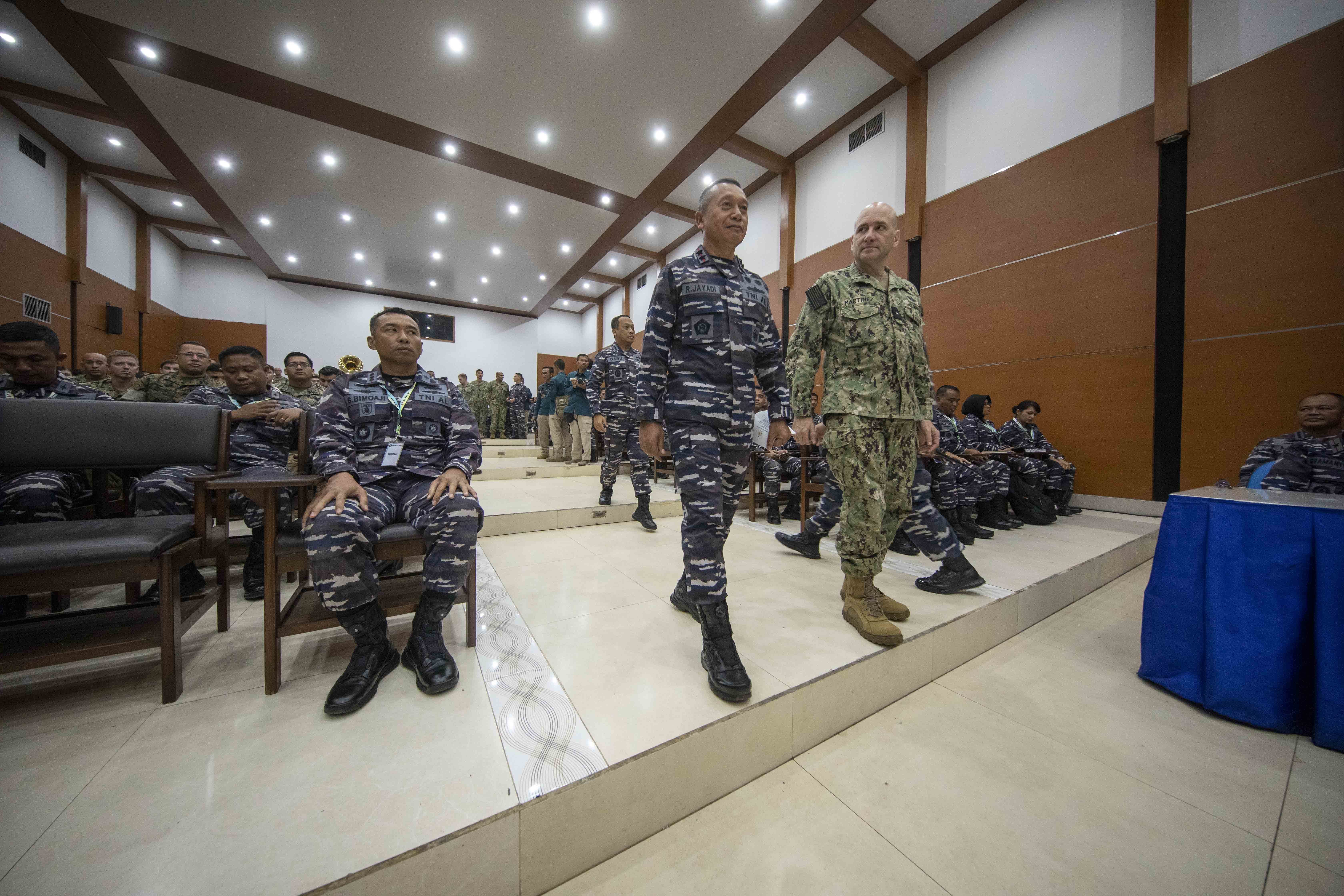
The Makin Island Amphibious Ready Group with the embarked 13th Marine Expeditionary Unit is now operating in the Java Sea with Indonesian forces for the next two weeks as part of the Cooperation Afloat Readiness and Training (CARAT) Indonesia 2022.
The exercise, which began on Wednesday, includes shore events in Surabaya, Indonesia and in at sea in the Java Sea from Dec. 7 through 21, according to a Navy news release.
“CARAT Indonesia is about practicing interoperability, honing capabilities, and strengthening relationships,” Rear Adm. Joaquin Martinez de Pinillos, the vice commander of U.S. 7th Fleet, said in the release. “The purpose is to make each of our navies more capable of defending our own nations. But also to make us more capable of defending the international norms that both of our governments consider in our national interests.”
Ships making up the Makin Island ARG are amphibious assault ship USS Makin Island (LHD-8) and amphibious transport docks USS John P. Murtha (LPD-26) and USS Anchorage (LPD-23), though the release did not specify if all ships in the ARG are participating in the exercise. The Makin Island Amphibious Ready Group left Naval Base San Diego in early November for a deployment to the Indo-Pacific region.
“The 28th year of the CARAT series exercise shows the U.S.’s commitment to a free and open Indo-Pacific region,” Capt. Tony Chavez, the commanding officer of Makin Island, said in the release.
“We share maritime security priorities with Indonesia and will continue to share knowledge, skills, and information to enhance interoperability and promote regional security cooperation.”
A P-8A Poseidon Maritime Patrol Aircraft with Commander, Task Force (CTF) 72 and MH-60S Seahawk helicopters from the “Blackjacks” of Helicopter Sea Squadron (HSC) 21 will join for CARAT, according to the Navy release. The exercise will also feature involvement from a wide range of U.S. personnel, including U.S. 7th Fleet, numerous tasks forces, – CTF 72, 73, 75, 76/3 – Amphibious Squadron (COMPHBIRON) 7, the 13th MEU, Destroyer Squadron (DESRON) 7, and Naval Special Warfare.
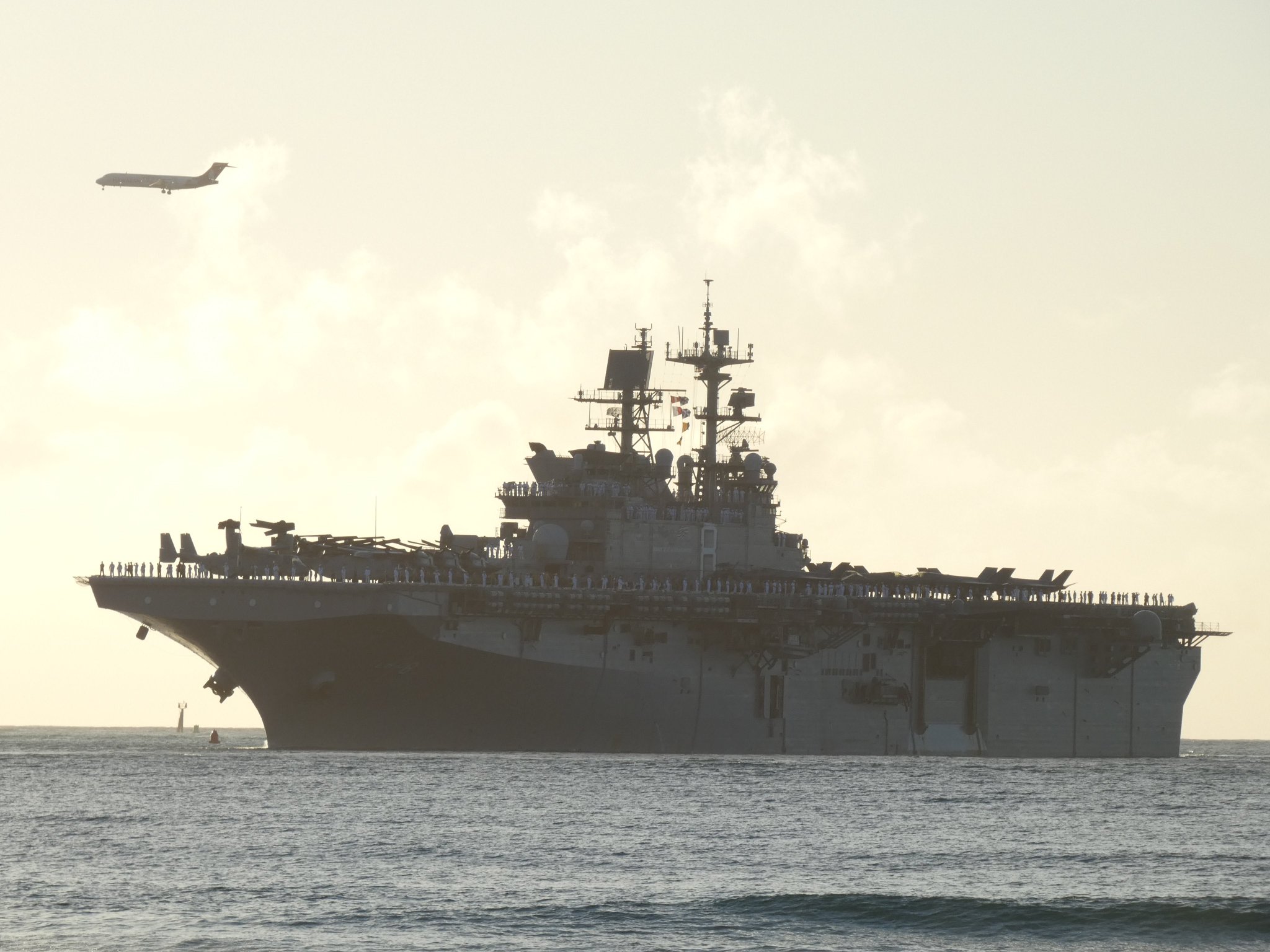
The Indonesian Navy is participating with frigates KRI Raden Eddy Martadinata (331) and KRI Abdul Halim Perdakusuma (355), corvette KRI Diponegoro (365) and Landing Ship Tank KRI Teluk Banten (516), along with units from 2nd Marine Force of the Indonesian Marine Corps. The Indonesian Air Force will also participate in the exercise.
In other developments, several warships from the U.S. Navy, the Royal Canadian Navy and Royal Australian Navy have returned to their respective home ports this week, wrapping up Indo-Pacific deployments that included extensive international engagements and multinational exercises.
On Monday, cruiser USS Chancellorsville (CG-62) pulled into its homeport of Yokosuka, Japan, after a six-month deployment in which the ship operated in both the Philippine and South China seas, according to a Navy news release issued that day.
“Chancellorsville‘s crew performed exceptionally well and set the bar throughout the entire deployment,” Capt. Edward Angelinas, Chancellorsville’s commanding officer, said in the release. “Their dedication, teamwork, and ability to overcome challenges enabled the ship to complete countless operations in the 7th Fleet area of operations. I am extremely proud of the crew and success they achieved throughout this year.”
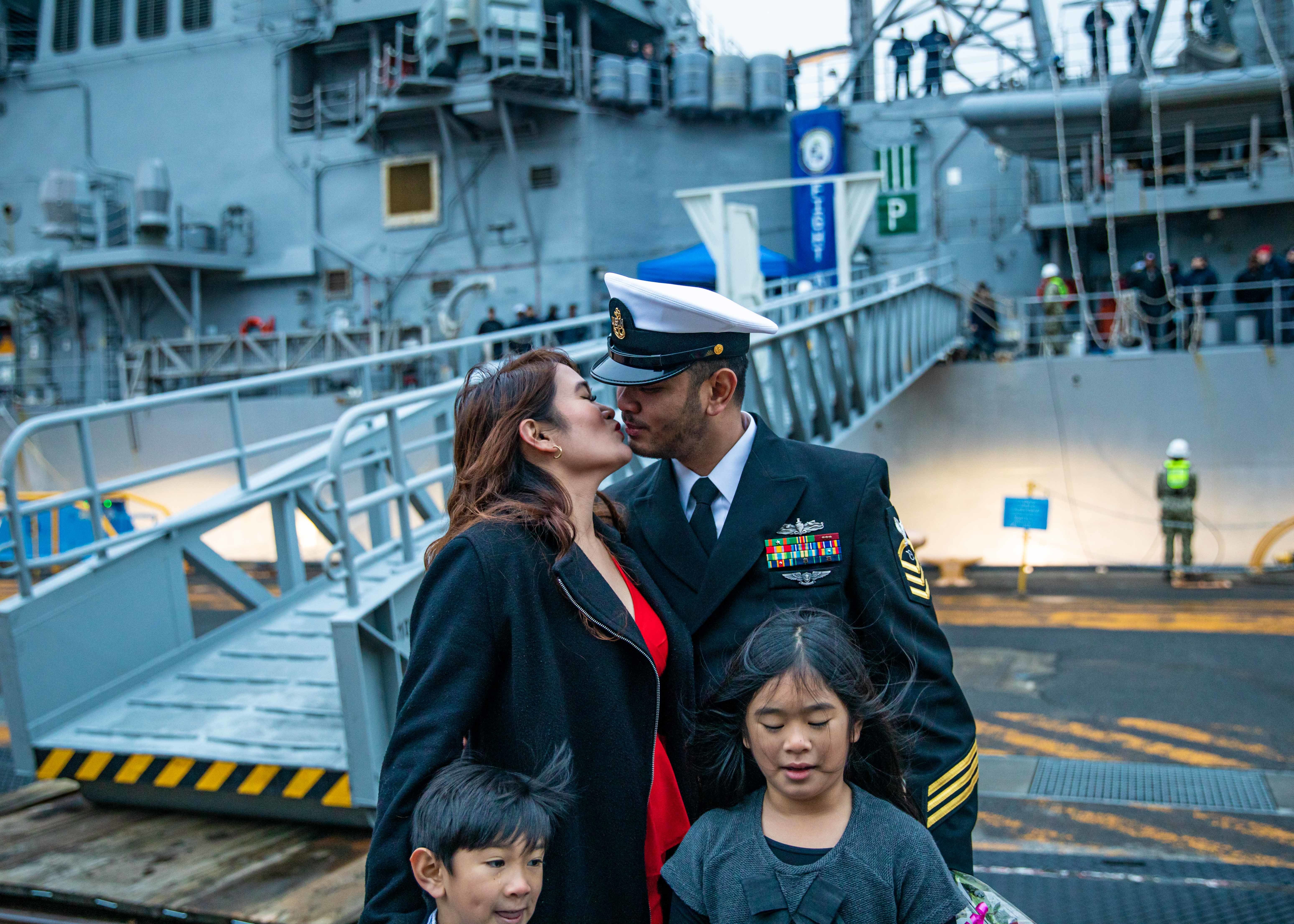
Chancellorsville left Yokosuka on May 20 as part of The Ronald Reagan Carrier Strike Group (CSG). Most recently the cruiser conducted a freedom of navigation operation on Nov. 29 in the South China Sea near the Spratly Islands.
Its other activities during the deployment included participating in the Maritime Counter Special Operations Exercise (MCSOFEX) between the U.S. and the Republic of Korea in September, a trilateral ballistic missile defense exercise between the U.S., Japan and South Korea in October, and the Japan Maritime Self-Defense Force’s International Fleet Review in November. Chancellorsville also participated in Exercise Malabar 2022 – which includes the U.S., Australia, India and Japan – and Exercise Keen Sword between the U.S. and Japan. During the deployment, Chancellorsville also visited the Republic of Korea and the Philippines.
In Canada on Monday, frigates HMCS Vancouver (FFH331) and HMCS Winnipeg (FFH338) returned to their homeport of Canadian Forces Base Esquimalt. The two frigates left their homeport on June 14 to participate in the Rim of the Pacific 2022 exercise in Hawaii. Vancouver subsequently participated in the multi-national Pacific Dragon air and missile defense exercise.
Both ships deployed to the Indo-Pacific under Operation Projection, in which the Canadian Armed Forces conduct port visits, training, exercises and engagements with foreign navies and other international security partners in the region. Vancouver was carried out Operation Neon, which is Canada’s contribution to a coordinated multinational effort to support United Nations Security Council sanctions imposed on North Korea. Canada’s participation includes surveillance and monitoring any ships that break the U.N. sanctions.
Winnipeg‘s time in the region included an emphasis on Southeast Asia from Aug. 8th through Dec. 5th, according to a Canadian Department of National Defense (DND) news release, while Vancouver operated in Northeast Asia for much of its deployment. The two frigates, together with a Royal Canadian Air Force CP-140 Maritime Patrol Aircraft (MPA), participated in the Keen Sword exercise in November.
On Sept. 20, Vancouver and U.S. Navy destroyer USS Higgins (DDG-76) conducted a Taiwan Strait transit of the Taiwan Strait. In an interview with the Financial Times on Monday, Canada’s Foreign Minister Mélanie Joly said Canada planned to conduct more Taiwan Strait transits.
“We need to make sure that the question of the Taiwan Strait is clear and that it remains an international strait,” Joly told the Financial Times. “We will continue to enforce the international rules-based order when it comes to the Taiwan Strait. And that’s why also we had a frigate going through the Taiwan Strait this summer, along with the Americans, [and] we’re looking to have more frigates going through it.”
Joly also told the newspaper that Canada would deploy three frigates to the Indo-Pacific in the future. On Nov. 27, Joly launched the Canadian Government’s Indo-Pacific Strategy, which described China as “an increasingly disruptive global power.”
“China is looking to shape the international order into a more permissive environment for interests and values that increasingly depart from ours,” the document reads. “This can be seen in China’s disregard for UN rulings on disputes in the South China Sea, and its actions to further militarize that region and challenge navigation and overflight rights.”
In Australia on Friday, landing helicopter dock HMAS Adelaide (L01) and frigate HMAS Anzac (FFH150) arrived in Darwin, concluding Indo-Pacific Endeavour 2022 (IPE22), the Australian Defense Force’s annual regional deployment and engagement activity.
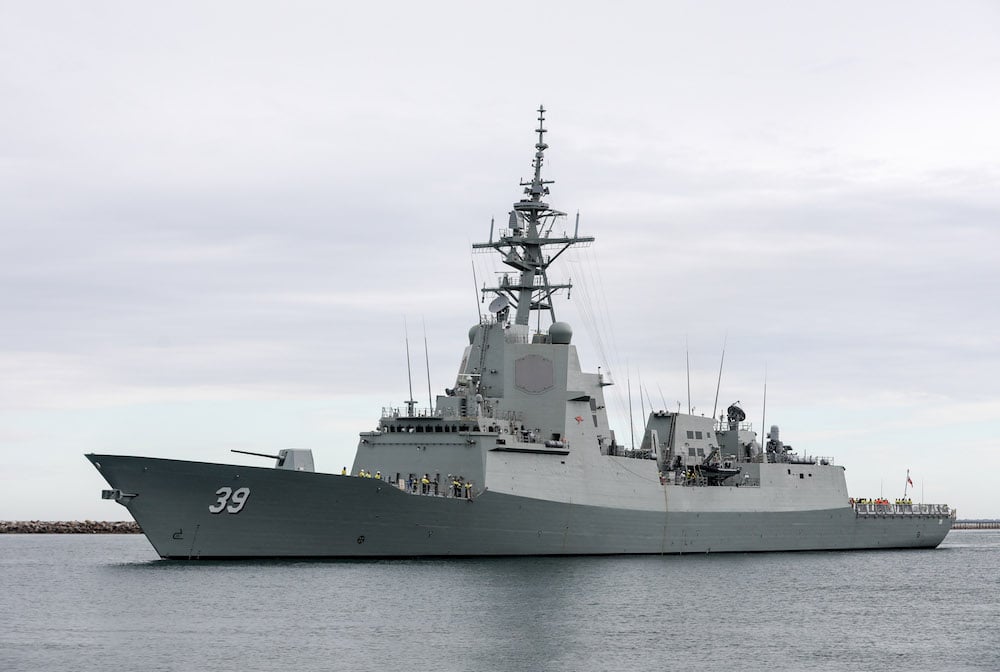
“From late September to early December, IPE22 involved five ships, 11 helicopters and approximately 1800 personnel. The contingent visited 14 countries including Bangladesh, Brunei, Cambodia, India, Indonesia, Laos, Malaysia, Maldives, the Philippines, Singapore, Sri Lanka, Thailand, Timor-Leste, and Vietnam,” according to the Australian Defense Force news release.
After the IPE22 tasking, the other three ships – destroyer HMAS Hobart (DDG39), frigate HMAS Arunta (FFH151) and replenishment ship HMAS Stalwart (A304) – deployed to the ROK and Japan for Australia’s regional presence deployment. Arunta conducted U.N. sanctions surveillance operations in October. The Australian ships have also been participating in exercise Keen Sword and Malabar 2022, as well as the JMSDF International Fleet Review, and are expected to return home to Australia before Christmas.
RAN submarine HMAS Farncomb (SSG74), which left Surabaya, Indonesia on Tuesday, is also heading home. Farncomb deployed to Hawaii in August to carry out training exercises with the U.S. Navy and subsequently sailed to Japan to take part in the IFR.


